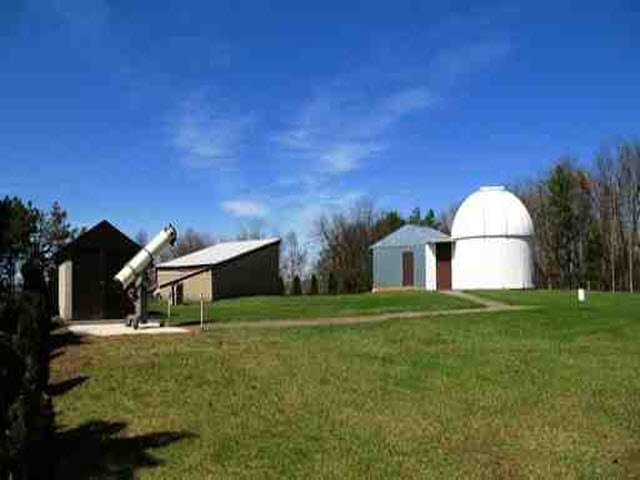
The Society was founded in 1955.
The Society's constitution states: "The primary objective of this society shall be to promote the interest, education and advancement of its members in amateur (observational) astronomy. The Society also considers as important the education of the public in astronomy, astronomical research, space exploration, the fight against light pollution and other areas of interest that are closely related to astronomy."
We currently have approximately 120 members.
We have public observing every Sunday, June through August, and then once a month during the rest of the year except for December, January and February. We also invite the public for special astronomical events such as the Transit of Mercury on May 9, 2016, or the annual Perseid meteor shower in mid August. We offer a six week observational astronomy class twice a year. We host scout groups at the observatory, and we support our members who go to their other facilities, camps and such, with their own equipment. We also work with a local nature center where our members bring their scopes for the public to view with, usually once a year.

We have both a dedicated observatory as well as several dark sky locations for the use of our members. Our observatory, the Edward Naylor Observatory, has four observatory buildings as well as a meeting room. The observatories have five permanently-mounted scopes including two Celestron C14s, a Meade 14' LX200, a 17" classical Cassegrain; and a 12 1/2" Cave Newtonian. We also have several other scopes available for use.
Our dark sky locations are in several state forests and parks for which we have special use contracts with Pennsylvania's Dept. of Conservation and Natural Resources. These are gated sites with no amenities other than fairly dark skies.

The most extraordinary thing about the star party is the location, Cherry Springs State Park, which has some of the darkest skies in the Eastern U.S. because of its location in the middle of both the Allegheny National Forest and the Susquehanna State Forest. The two nearest towns are 12 miles and 15 miles from the Park and they are 1000' lower in elevation. The closest city is Williamsport, PA, approximately 75 miles away, as the crow flies, so there is almost no light dome visible.

I think the most memorable involves a member whose son is autistic. As is true with many suffering from autism, this young man had trouble interacting with others. His father started showing him objects through his telescope which got the young man interested in astronomy. He is now so enthusiastic about astronomy that he is now able to interact with other people, and he even participates in the public observing at our star party by showing people objects using his scope.
His story was filmed by a journalism professor at Penn State. The film was featured on Accuweather.com.
At one time I would have said, "Show them Saturn or M42 or M31". That may still work with those in middle age or older. But I think to get the younger generations interested, we have to take advantage of technology. Use websites like Astronomy Photo of the Day. Use things like the numerous cell phone mounts now available to show how easy it is now to take astroimages. OK, it may not get those kids out observing the way many of us do, but if you get them interested in astronomy in general, then that interest can develop into that crazy obsession of getting out under the stars to actually LOOK at the universe with their own eyes that us old timers enjoy so much.
The Astronomical Society of Harrisburg
Cherry Springs Star Party


